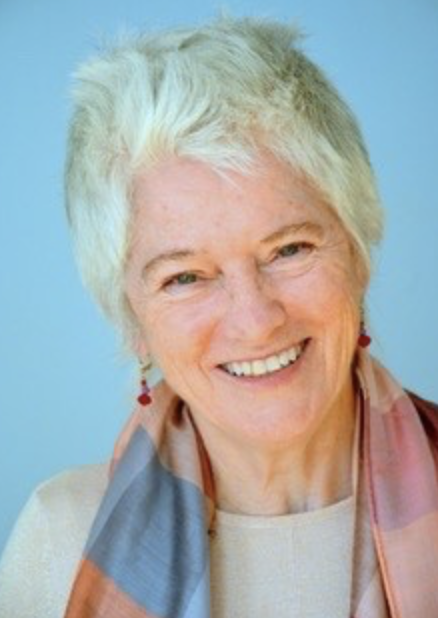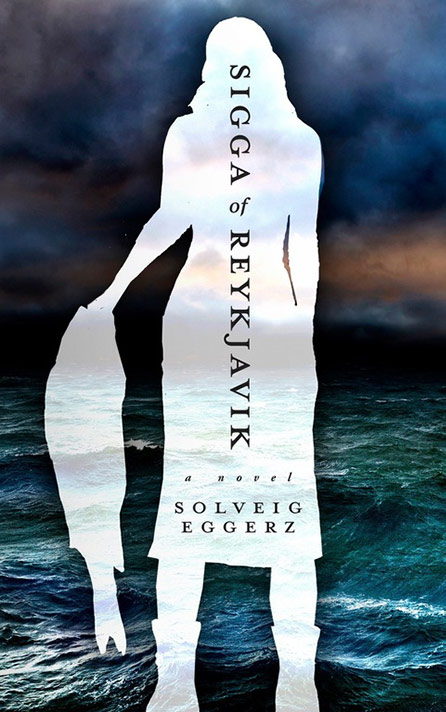
“My interest in the 20th century history of Iceland led me to write. I wanted to show how Iceland struggled for independence from Denmark, how isolated Iceland was from the rest of the world until May 10, 1940 when Churchill’s occupation force arrived, and how Iceland’s independence hung in the balance during World War II.”—Solveig Eggerz
This blog posts on Mondays. Fourth Mondays of the month I devote to a Q & A with a fellow writer.

One of my very favorite writers is Solveig Eggerz. Waaaay back in 2011 I interviewed her about her novel The Seal Woman for my Conversations with Other Writers occasional podcast series (listen in to that interview anytime here.) Although she has been living in the Washington DC area for many years, Solveig Eggerz is from Iceland, so of course she speaks Icelandic and she writes about Iceland in a knowing way. Her work is so fresh, like a sea breeze and it will carry you right to the shores of that far, fantastic isle. Her novel Sigga of Reykjavik is recently out in a new edition from Bacon Press Books, apropos of which she agreed to answer some questions. But first, here is the catalog copy for Sigga of Reykjakik:
Meet Sigga, a spirited young woman who flees the abusive conditions on an Icelandic farm, only to face grinding poverty in Depression-era Reykjavik. Her struggle for independence runs parallel to Iceland’s quest for freedom from Danish dominance. Born a century before the Me-Too movement, Sigga supports her family, working among men who learn never to touch her without her permission. Adventurous, optimistic, and always practical, Sigga is thrilled when World War II brings Iceland out of centuries of isolation. Thousands of Allied forces occupy the country, bringing money and work. But moral dilemmas abound as Sigga seeks to financially exploit the occupation while at the same time protecting her young and beautiful red-headed daughter from soldiers.

C.M. MAYO: In brief, what inspired you to write Sigga of Reykjavik?
SOLVEIG EGGERZ: My interest in the 20th century history of Iceland led me to write. I wanted to show how Iceland struggled for independence from Denmark, how isolated Iceland was from the rest of the world until May 10, 1940 when Churchill’s occupation force arrived, and how Iceland’s independence hung in the balance during World War II.
C.M. MAYO: As you were writing, did you have in mind an ideal reader?
SOLVEIG EGGERZ: My ideal reader would be excited about little known history and charmed by quirky characters.
C.M. MAYO: Now that it has been published, can you describe the ideal reader for this book as you see him or her now?
SOLVEIG EGGERZ: An ideal reader loves my protagonist despite her flaws and sees the logic in gaining one’s personal independence through sewing corsets.
C.M. MAYO: Can you share any surprises for you about your book’s reception? (Andf has it been different in different countries?)
SOLVEIG EGGERZ: I have been surprised when readers do not discern Sigga’s anger as a cloak for the intense love she felt for those closest to her.
C.M. MAYO: Which writers have been the most important influences for you?
SOLVEIG EGGERZ: The writers that set me free from the ordinary are Annie Proulx (The Shipping News) and the Icelandic writer, Halldor Kiljan Laxness (Independent People).
C.M. MAYO: Which writers are you reading now?
SOLVEIG EGGERZ: I Know Why the Caged Bird Sings by Maya Angelou, even better on second reading; Survival on the Edge: Seawomen of Iceland by anthropologist, Margaret Willson; and a trilogy about a brave and wise woman of the Viking era, Auður Djúpúðga by Vilborg Davíðsdóttir
C.M. MAYO: How has the Digital Revolution affected your writing? Specifically, has it become more challenging to stay focused with the siren calls of email, texting, blogs, online newspapers and magazines, social media, and such? If so, do you have some tips and tricks you might be able to share?
SOLVEIG EGGERZ: Actually I love writing on the computer. I am not one to long for life in a cabin on a mountaintop where I write on a yellow pad free of technology. I don’t like to be surprised by “emergencies” days after they occur. I resolve the issue of disturbances by keeping my phone next to me, so I can glance at a message without shutting down my story. Maybe I am exaggerating my equanimity!
C.M. MAYO: For those looking to publish, what would be your most hard-earned piece of advice?
SOLVEIG EGGERZ: Don’t waste years seeking an agent, a large publisher, a small publisher, or anything. Instead invest time and money in getting your work read and vetted 1) by your favorite writers group and 2) by an excellent developmental editor or mentor. Once you feel confident that you’ve written a good book, do what feels right regarding publishing.
C.M. MAYO: What’s next for you as a writer?
SOLVEIG EGGERZ: I’m returning to my toughest task, assigning coherence to my collection of personal stories, so that I might honestly call them a memoir.
*
Visit Solveig Eggerz and learn more about her novels at solveigeggerz.com

Donald M. Rattner’s My Creative Space
Q & A: Sara Mansfield Taber on Chance Particulars: A Writer’s Field Notebook
*
My new book is Meteor

